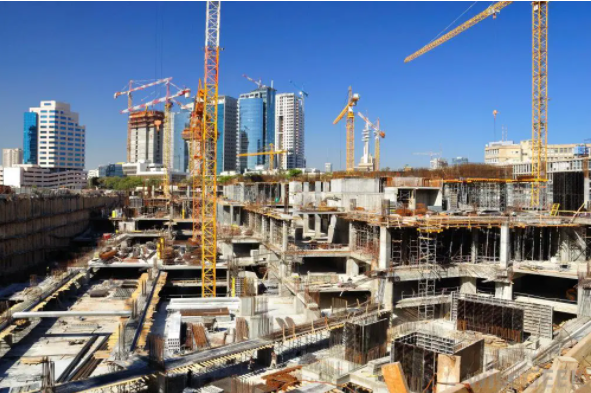The Importance of a Well-Structured Construction Phase Plan
In the world of construction, a well-structured plan is the cornerstone of success. A well-executed project relies heavily on careful planning and organisation, especially during the construction phase. Enter the Construction Phase Plan, a vital document that lays the foundation for a smooth and efficient project.
The importance of a well-structured Construction Phase Plan cannot be overstated. It not only ensures the safety of workers and the public but also helps to minimise risks and potential delays. By detailing every aspect of the project, from risk assessment to emergency procedures, the plan provides a clear roadmap for all involved parties.
A properly constructed Construction Phase Plan also promotes effective communication among the project team, facilitating collaboration and productivity. This document allows for proactive decision-making, potential hazard identification, and efficient allocation of resources.
Whether you are a project manager, contractor, or stakeholder, understanding the importance of a well-structured Construction Phase Plan is crucial. By implementing a comprehensive plan, you can enhance safety, streamline processes, and ultimately achieve successful project outcomes.
What is a construction phase plan?
A construction phase plan is a document that outlines the key details and procedures for a construction project. It is designed to ensure that all parties involved in the project are aware of their roles and responsibilities, as well as the potential risks and hazards associated with the work. The plan typically includes a detailed health and safety assessment, as well as a timeline and budget for the project.
A construction phase plan is required by law in many countries, including the United Kingdom, where it is a legal requirement under the Construction (Design and Management) Regulations. This legislation aims to improve health and safety in the construction industry by ensuring that proper planning and risk management measures are in place at every stage of a project.
Legal requirements for a construction phase plan
In many authorities, a construction phase plan is a legal requirement for any construction project. The plan must be prepared before work begins and must be regularly reviewed and updated throughout the project.
The legal requirements for a construction phase plan vary depending on the authority, but in general, the plan must include information such as a description of the project, details of the principal contractor and other key personnel, a risk assessment, and emergency procedures. It must also include information on how the project will be managed, including details of how health and safety risks will be controlled and how workers will be trained and supervised.
The importance of a well-structured construction phase plan
The importance of a well-structured Construction Phase Plan cannot be overstated. It not only ensures the safety of workers and the public but also helps to minimise risks and potential delays. By detailing every aspect of the project, from risk assessment to emergency procedures, the plan provides a clear roadmap for all involved parties.
One of the main benefits of a well-structured construction phase plan is that it promotes effective communication among the project team. By clearly outlining the roles and responsibilities of each team member, the plan helps to facilitate collaboration and ensure that everyone is working towards a common goal. This, in turn, leads to increased productivity and efficiency.
Another key importance of a well-structured construction phase plan is that it allows for proactive decision-making. By identifying potential hazards and risks before they occur, the plan enables the project team to take preventative measures and mitigate the impact of any issues that may arise. This not only helps to ensure the safety of workers but also helps to keep the project on track and minimise any potential delays.
Benefits of having a construction phase plan in place
Having a construction phase plan in place offers a range of benefits for all parties involved in a construction project. For the project manager or contractor, a well-structured plan provides a clear roadmap for the project, helping to ensure that everything runs smoothly and on schedule. It also helps to minimise risks and potential delays, which can save both time and money.
For the workers on the construction site, a construction phase plan helps to ensure their safety. By outlining potential hazards and detailing emergency procedures, the plan helps to minimise the risk of accidents and injuries. It also ensures that workers are properly trained and supervised, further enhancing their safety on site.
For stakeholders, a construction phase plan provides peace of mind. By demonstrating that the project is being carefully planned and managed, the plan helps to build trust and confidence in the project. This can be particularly important when seeking financing or approval for the project.
Components of a well-structured construction phase plan
A well-structured construction phase plan typically includes several key components. These components ensure that all necessary information is included and that the plan is comprehensive and effective.
- Project description: This section provides an overview of the project, including its scope, objectives, and timeline.
- Risk assessment: This section identifies and assesses potential hazards and risks associated with the project. It includes details of how these risks will be managed and mitigated.
- Site-specific information: This section provides details of the construction site, including its location, layout, and any specific considerations or restrictions that may apply.
- Roles and responsibilities: This section outlines the roles and responsibilities of each member of the project team, including the principal contractor, subcontractors, and other key personnel.
- Emergency procedures: This section details the procedures to be followed in the event of an emergency, such as a fire or accident. It includes information on evacuation routes, emergency contact numbers, and first aid provisions.
- Training and supervision: This section outlines the training and supervision requirements for workers on site. It includes details of any specific certifications or qualifications required and how training will be provided.
- Communication and collaboration: This section outlines how communication and collaboration will be facilitated throughout the project, including regular meetings, progress reports, and a system for addressing any issues or concerns that may arise.
- Traffic management: How site traffic will be managed within the site and externally. The routes site traffic will arrive, whether parking will be provided within site or externally. Whether deliveries will be made within site, on the road network or a delivery pit lane. Vehicle Swept Paths will be a crucial part of this. Whether any warning sign for pedestrians and vehicle will be required.
Creating a construction phase plan
Creating a construction phase plan requires careful consideration and collaboration. The plan should be tailored to the specific needs and requirements of the project and should take into account any relevant legislation or regulations.
The first step in creating a construction phase plan is to gather all necessary information and conduct a thorough risk assessment. This involves identifying potential hazards and risks associated with the project and determining how these risks can be managed and mitigated. It is important to involve all relevant stakeholders in this process, including the project manager, contractors, and health and safety professionals.
Once the risks have been identified and assessed, the next step is to develop a detailed plan that outlines how these risks will be managed. This includes detailing the roles and responsibilities of each member of the project team, as well as any specific training or supervision requirements.
It is also important to establish clear communication channels and procedures for addressing any issues or concerns that may arise. Regular meetings and progress reports should be scheduled to ensure that everyone is kept informed and that any potential issues are addressed promptly.
Implementing and reviewing the construction phase plan
Implementing a construction phase plan requires ongoing monitoring and review. It is important to regularly assess the effectiveness of the plan and make any necessary adjustments or updates.
Regular site inspections should be conducted to ensure that the plan is being followed and that any potential hazards or risks are being properly managed. Any issues or concerns that arise should be addressed promptly and documented for future reference.
It is also important to regularly review and update the construction phase plan as the project progresses. As new risks or hazards are identified, they should be incorporated into the plan and appropriate measures should be taken to manage them.
Common challenges in creating and implementing a construction phase plan
Creating and implementing a construction phase plan can present several challenges. One of the main challenges is ensuring that all relevant stakeholders are involved in the process and that their input is taken into account. This requires effective communication and collaboration among the project team.
Another challenge is ensuring that the plan is comprehensive and effective. It is important to conduct a thorough risk assessment and to consider all potential hazards and risks associated with the project. This requires careful planning and attention to detail.
Finally, implementing a construction phase plan requires ongoing monitoring and review. It is important to regularly assess the effectiveness of the plan and make any necessary adjustments or updates. This requires proactive communication and a commitment to continuous improvement.
Conclusion
In conclusion, a well-structured construction phase plan is a crucial document for any construction project. It provides a clear roadmap for the project, ensuring that all parties are aware of their roles and responsibilities and that potential risks and hazards are properly managed. By implementing a comprehensive plan, project managers, contractors, and stakeholders can enhance safety, streamline processes, and ultimately achieve successful project outcomes. So, if you want to ensure the success of your construction project, don't overlook the importance of a well-structured construction phase plan.






Comments are closed.